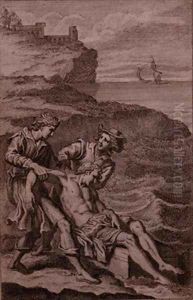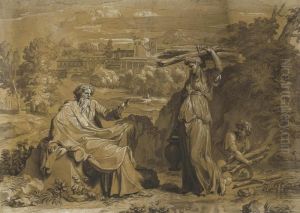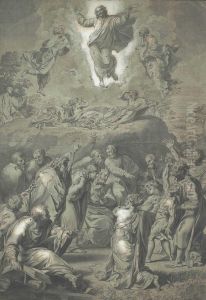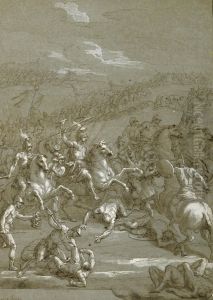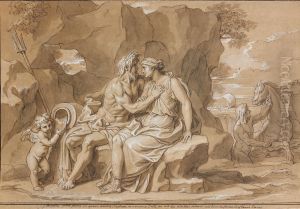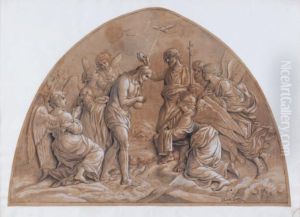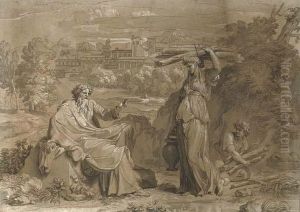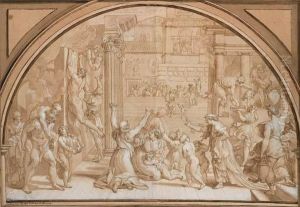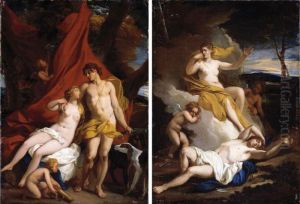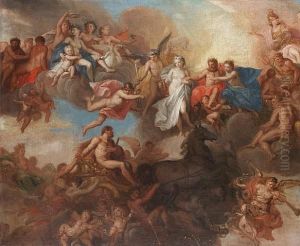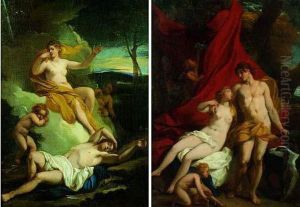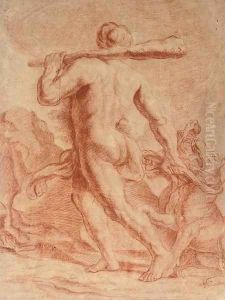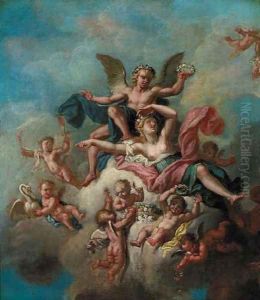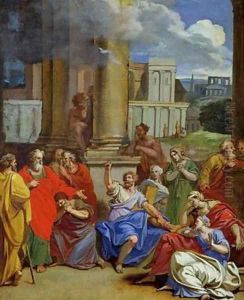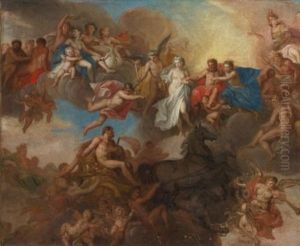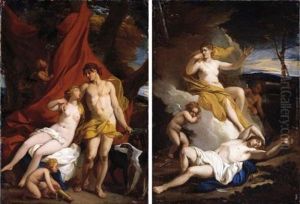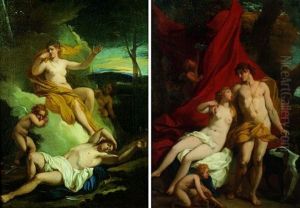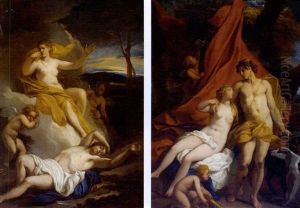Louis Cheron Paintings
Louis Chéron was a French painter, draughtsman, and engraver born in Paris in 1660. He was recognized for his classical style, which was heavily influenced by the Baroque movement prevalent during his time. Chéron was the son of an artist, which provided a nurturing environment for his artistic talents from a young age. His early education in art came from his father, and he further honed his skills under the tutelage of notable artists of the period.
Chéron moved to England in the late 17th century, where he became an influential figure in the art scene. In England, he was appreciated for his historical and mythological paintings, which were characterized by dynamic compositions and a vivid use of color. His works often depicted scenes from ancient history and mythology, resonating with the tastes of his contemporaries who had a keen interest in classical antiquity.
Beyond painting, Louis Chéron also made significant contributions to the world of engraving and was an esteemed teacher. He co-founded an art academy in London, which played a crucial role in the education of several British artists. This academy was one of the predecessors to the Royal Academy of Arts, highlighting Chéron's lasting impact on the British art world.
Throughout his career, Chéron's work was celebrated for its expressive figures and detailed landscapes, which showcased his mastery over both composition and color. Despite the challenges of working in a foreign country, he managed to establish a successful career and left behind a body of work that continued to influence artists long after his death in 1713.
Louis Chéron's legacy is remembered for bridging French classical art with the emerging British art scene of the early 18th century. His paintings, engravings, and teachings contributed significantly to the development of art in England, marking him as a key figure in the transition towards the modern era of British art.
